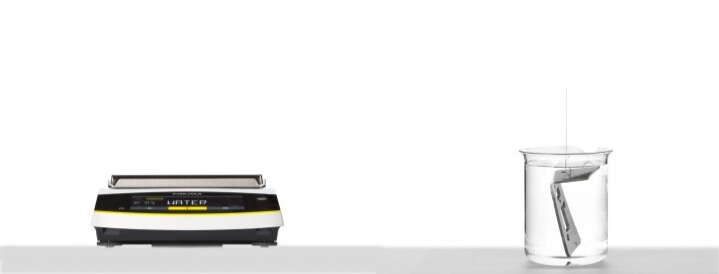
Magnetism and electricity are natural phenomena, which have been known since ancient times. In 1820, Danish physicist Hans Christian Oersted noticed that a compass needle was deflected when held near a wire through which an electric current flowed. He concluded that a current-carrying conductor is surrounded by a magnetic field that affects the compass needle. Today, the interaction of electricity and magnetism is explained using an elegant physical theory summed up in the Maxwell equations.
In the industrial age, the importance and use of magnetism and magnetic materials grew, most notably through the development of electric motors. Nowadays, it would be hard to imagine life without the benefits of magnetic effects and the use of magnetic materials; for example, digital data are saved onto magnetic media like the computer hard disk, and electric motors are beginning to compete with gasoline engines. However, magnetism is an unwelcome phenomenon during weighing.
Magnetic forces and their influence on the weight result, are strongly dependent on the orientation of the sample in the field of disruption. The influence of magnetic forces is stable over time and is often only detected on the basis of repeated weighing, because different weight results are generally obtained as a result of varying the position and orientation of the sample on the weighing pan. Thus, this factor poses a latent negative influence on the accuracy of the weighing result.
How Does Magnetism Influence Weighing?
Despite the positive benefits of magnetism, it is rather unwelcome during weighing. Weighing magnetic materials or magnetisable tare vessels or samples may destabilise the weight result or compromise repeatability. For example, when weighing a sample or vessel containing iron, steel, cobalt, or nickel, users may see the following effects:
- Weight values are stable, but non-repeatable
- Different values are displayed, depending on the position of the sample on the weighing pan
These effects may be from one of two causes:
- If the material to be weighed is magnetised, such as a stirring rod of a magnetic stirrer, the weight force of the sample is superseded by the attractive force its magnetic field exerts on the magnetisable parts of the weighing chamber or weighing cell.
- If the weighing cell is designed on the electromagnetic force compensation principle, a strong magnet is used in this system. Despite careful shielding measures of the magnet, the balance is surrounded by a low residual magnetic field, and this residual field can influence the weighing result if interaction occurs with the sample or vessel.
How can I address the magnetic influence on the weight results?
One simple and effective solution to address the magnetic influence on weight results is to increase the space between the material being weighed and the weighing cell. This works because the magnetic interaction has a quadratic dependence on the distance from the material being weighed. The distance can often be increased by simply placing a piece of glass, wood, non-magnetic metal, or plastic between the weigh cell and the sample.
If this cannot be done because a bulky material is to be weighed, the principle of below-balance weighing is another option. In this case, to increase the distance between the material and the weighing pan, the material being weighed is secured underneath the weighing pan using a hanger designed for below-balance weighing.

Likewise, if the distance cannot be increased due to space constraints, shields of soft magnetic materials can be used to rectify this problem. These shields are created from highly permeable nickel iron alloys (known as Mu-metal) and are available in different shapes, such as foils, plates, or tubes. If there are problems with weighing of magnetic samples or vessels, the above options can help, but the best solution is to use a balance specially designed to address problems with magnetism. For instance, the modular Cubis™ II premium laboratory balance series has weighing pans made of non-magnetic titanium for all higher-resolution models, starting with analytical balances. Moreover, Cubis™ II ultra-micro and micro balances have both a weighing pan and a draft shield base plate of titanium, to reduce the destabilising magnetic influence when weighing samples or tare vessels containing iron, cobalt or nickel.
Does orientation of the sample holder make a difference?
An additional problem may occur with the orientation of a stainless steel sample holder, in the case that a special sample holder is used for specific customer applications, for example weighing reaction vials, reaction tubes or filters. If the sample holder is rotated, for example, to achieve a better positioning for dosing of small powder amounts, the orientation of the magnetic fields changes and thus the weight value could be influenced. The same effect could also occur if the round stainless steel pan of an ultra-micro or micro balance is slightly rotated.
However, with parts made of titanium this cannot happen. As mentioned previously, all sample holders for Cubis™ II are made from the highest quality titanium and thus deliver the highest reliability of weighing performance and results, and a high grade of corrosion resistance.

.jpg-650.jpg)
